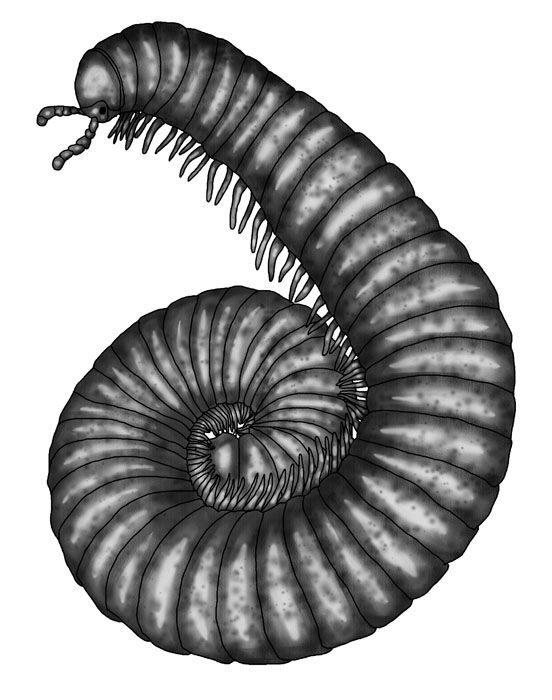
Diplopod myriapods
|
Classification (systematic position)
Animal Kingdom |
Morphological characteristics
Myriapods (centipedes) with a cylindrical body, segmented and generally long like the iules and polydesms (the glomeris is a diplopod millipede with a slightly elongated body which makes it look like a woodlouse), many legs which are more or less long depending on the species, two pairs of legs per segment (which differentiates them from chilopod myriapods); the first 4 body segments have only one pair of legs and the end of the abdomen has no legs; 1 pair of antennas. The reproductive organs replace a pair of walking legs (gonopoda).
Life cycle
Diplopoda reproduce in autumn and spring. The males cling to the females to fertilize them with their reproductive legs. The female then lays ten to a hundred eggs in the ground. The female then makes a shelter out of manure and earth for her eggs (one to several eggs per shelter depending on the species). Diplopods have rather nocturnal habits.
Diet
Diplopoda are detritivores because they feed on plant debris which they transform.
Natural predators or regulators
Diplopoda are preyed upon by rodents, amphibians and birds.
Habitats
Diplopods live on the surface of the ground in moist environments sheltered from light under dead leaves, piles of stones or dead wood.
Interests in the garden
Diplopoda accelerate the decomposition of organic matter and participate in the formation of humus and soil aeration.
Did you know ?
Diplopods can roll up into a ball (volvation) to protect themselves in the event of attack by predators and can secrete repellent and toxic substances (alkaloids, phenols) which sometimes leave yellow-orange stains and an odor on the skin. acid.





